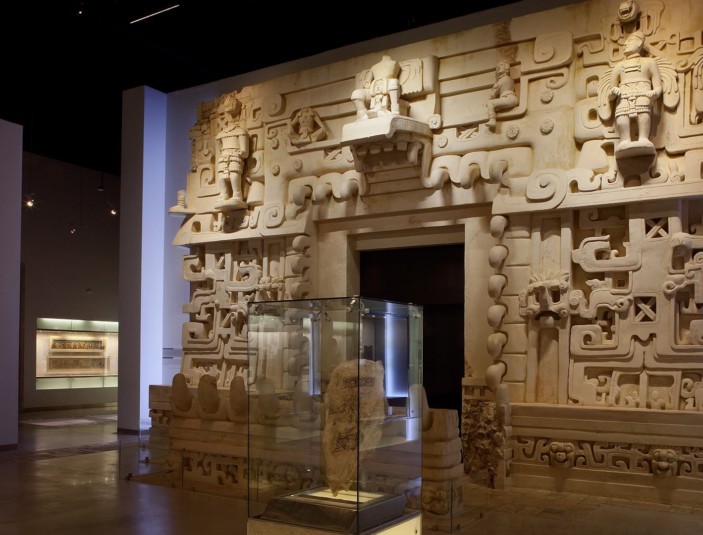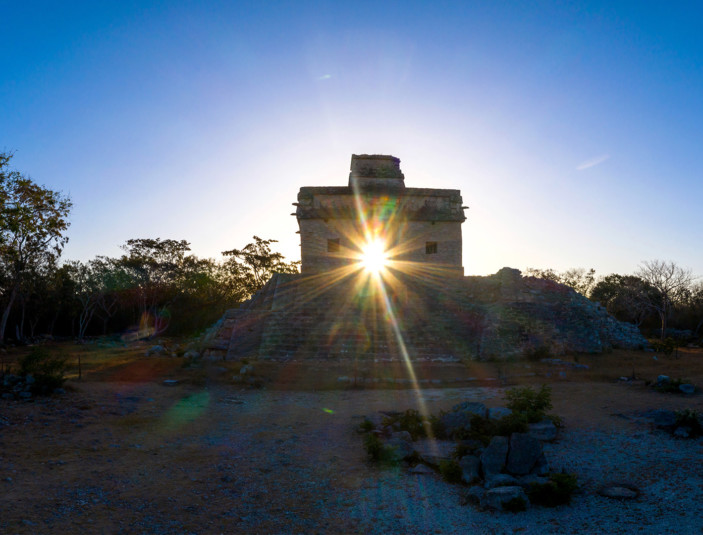About
Dzibilchaltún is considered one of the oldest Mayan cities, which name means "the place where there is writing on the flat stones". Dzibilchaltún gathers in one place a pre-Hispanic city, an eco-archaeological park, and “El Museo del Pueblo Maya” which preserves and exhibits Mayan and Spanish vestiges, from clay objects to paintings, Spanish armor and weapons, several Mayan steles, stones, and carved lintels in excellent conditions.
Dzibilchaltún also has a 16th century Franciscan chapel, which is located right in the center of the Mayan city.
Dzibilchaltún is located on the highway Mérida-Progreso at kilometer 14. It can be visited every day from 8:00 to 17:00 hrs.
 Cenote Xlacah
Cenote XlacahCenote Xlacah
The city preserves 12 sacbés (sak bé oob) or white roads, most of which start from the center and head towards the constructions on the periphery. One of them leads to the Xlakáh cenote, which in Mayan means "old town", one of the largest and deepest cenotes found in Yucatán so far, and from which a vast number of archaeological pieces have been rescued, mainly vessels.
Xlacah is a kind of natural outdoor pond at ground level which makes it easily accessible. Its crystalline waters covered with lilies floating on the surface have been eternal witnesses of the greatness of this place, accentuating its unrivalled beauty as they are caressed by the sunlight.
 The Museum of the Mayan People
The Museum of the Mayan PeopleThe Museum of the Mayan People
The Museum of the Mayan People is made up of 4 exhibition halls:
La Pérgola de los Monolitos (The Pergola of the Monoliths): where pre-Hispanic monolithic sculptures from Yucatan, Campeche and Quintana Roo are exhibited, at the edge of a path that runs through a garden of native plants.
La Sala de Arqueología Maya (The Room of Mayan Archaeology): dedicated to the pre-Hispanic era, it exhibits ceramic and architectural elements from Chiapas, Campeche, and Yucatan; arranged in such a way as to illustrate themes such as the Mayan concept of the universe, the emergence of man, the relationship between man and nature, the gods, social stratification, painting, writing, specialization in work and the tracking of time.
La Sala de Historia (The History Room): where a special space is dedicated to the Archaeology of Dzibilchaltún, the Contact and Conquest of the Mayan People and the formation of the Yucatecan identity.
El Solar Maya (The Maya Solar): an annexed area where a typical Mayan rural house was built, made using traditional techniques, materials, and labor.
 Dzibilchaltún Equinox
Dzibilchaltún EquinoxDzibilchaltún Equinox
The archaeo-astronomical phenomenon of the equinox occurs in Dzibilchaltún, at dawn on March 21st and September 21st, when the door of the Temple of the Seven Dolls is illuminated by the glare of the Sun that rises on the horizon and, at a given moment, the celestial disc is in the center of the door and creates a spectacle of light and shadow on the west facade.
In these days, you can observe the incredible precision of Mayan astronomy integrated into its architecture. The Mayas used the sun as the basis for planning their lives, because they lived from agriculture. With the spring equinox they began sowing and at the autumn equinox they harvested.
